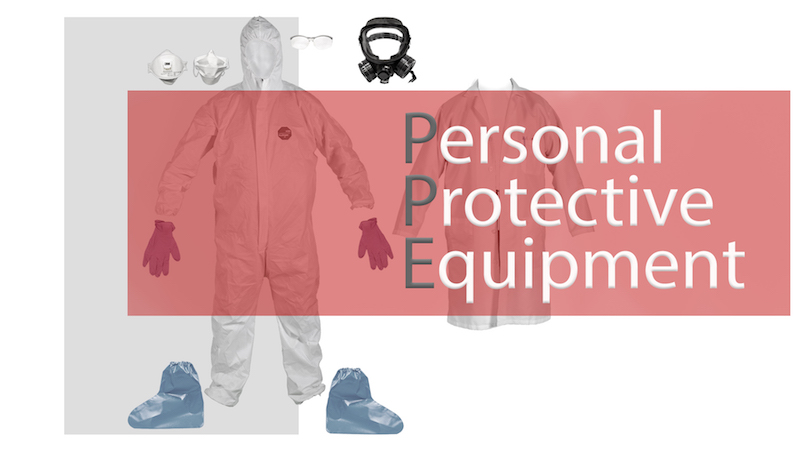Skill Group: Biosafety and Biosecurity
SKILL OVERVIEW: Safety and Prevention of Infection
Dr. Jason Stull; Dr. Andy Bowman; Dr. Dubraska Diaz-Campos; Dr. Liza Guess; Dr. Jeanette O'Quin; Dr. Alison Shull; Dr. Amy Voss; Dr. Jonathan Yardley; Dr. Antoinette Marsh; Dr. Emily Feyes; and Dr. Jacqueline Nolting
This skill is part of the skill unit: Hazard Control and Prevention of Infection

Introduction
Effective use of infection control (biosecurity) principles is an important skill for a day-one veterinarian to have. We use these practices to not only protect us, but also the animals that we work with. PPE, hand hygiene (washing) and appropriate disposal of infectious waste reduce disease transmission by stopping us from contaminating ourselves as well as the environment.
It’s important to learn about potential hazards that can be present in the veterinary clinical setting, how these hazards can be mitigated, how to perform a risk (hazard) assessment, the proper ways of putting on and taking off PPE, performing hand hygiene, and safely disposing of waste – common mistakes that people make undo all the benefits that these practices provide, and contributes to a false sense of security that can be dangerous.
Learning Outcomes
By the end of this module, you should be able to:
- Identify and assess occupational risks in Veterinary Medicine.
- Describe the importance of PPE as part of infection control in veterinary settings.
- Identify the components of and perform a risk assessment to select appropriate PPE in a veterinary clinical setting
- Identify the pieces of PPE and describe why and when they are used in clinical practice.
- Demonstrate effective donning techniques.
- Demonstrate effective doffing techniques.
- Identify appropriate disposal of PPE, infectious waste, and sharps
- Describe the importance of hand hygiene and when it should be used
- Demonstrate effective hand hygiene technique
Module Roadmap
To successfully complete this module, we recommend that you review the following lessons in order:
- Risk Assessment and Introduction to Personal Protective Equipment (PPE)
- Types of PPE and Indications for Use Based on Risk Assessment
- Donning
- Doffing
- Disposal of PPE
- Handling Non-PPE Infectious Waste and Sharps
- Hand Hygiene